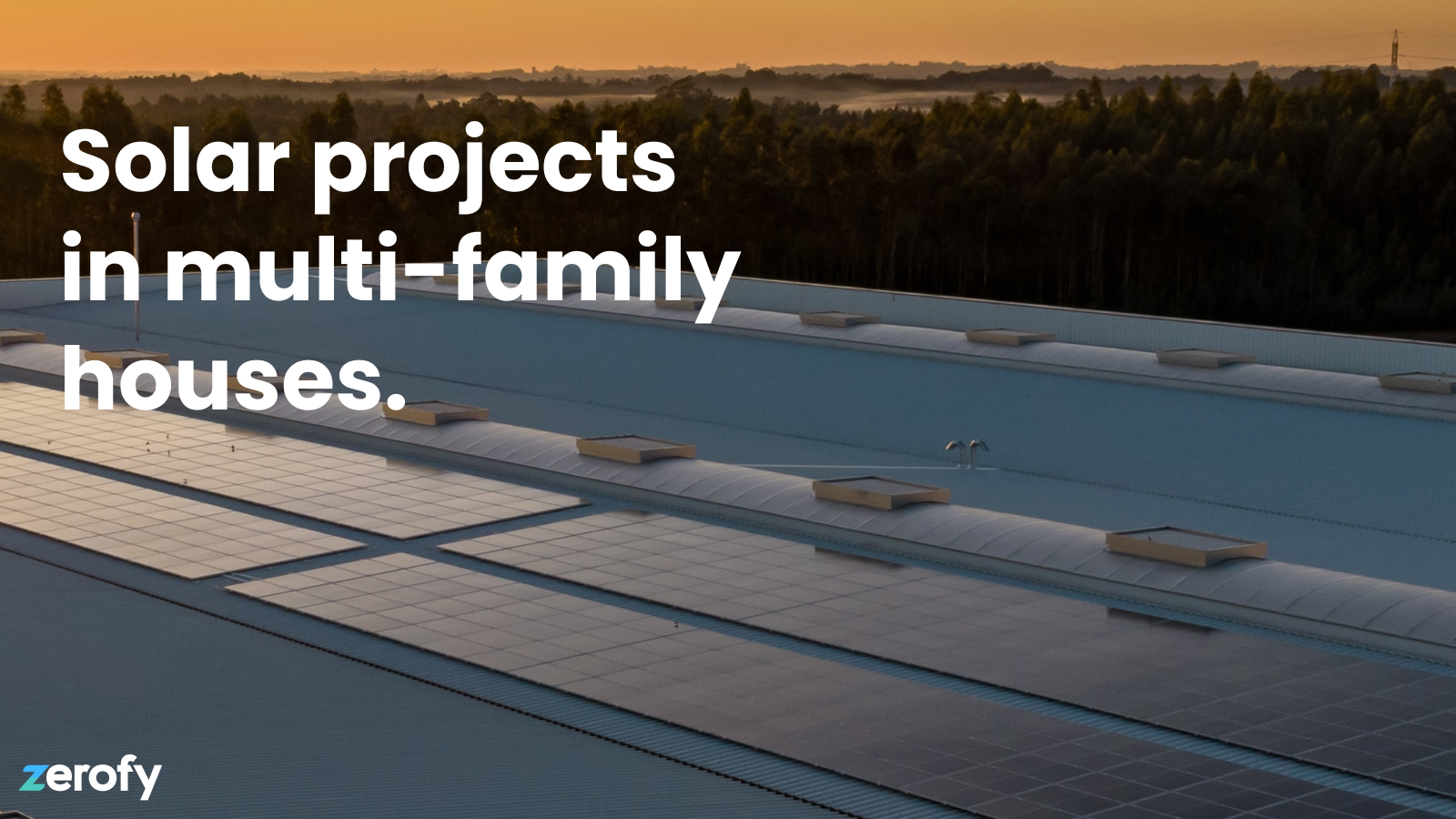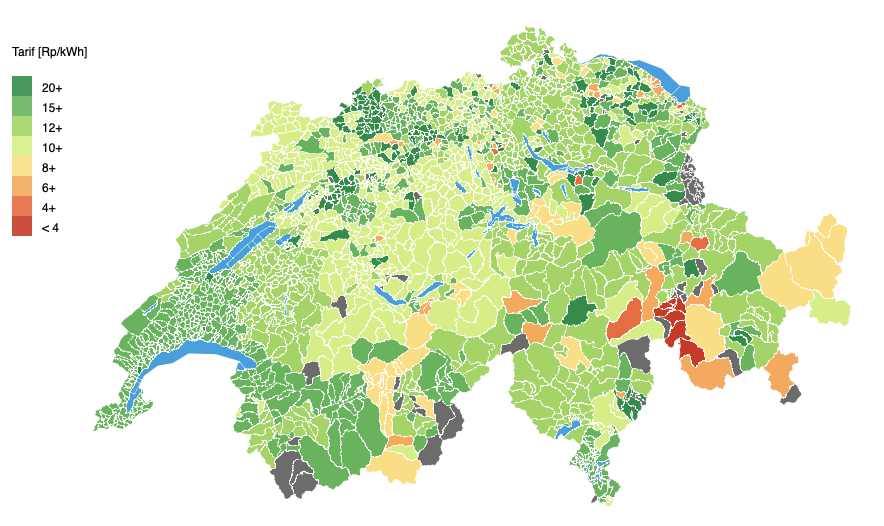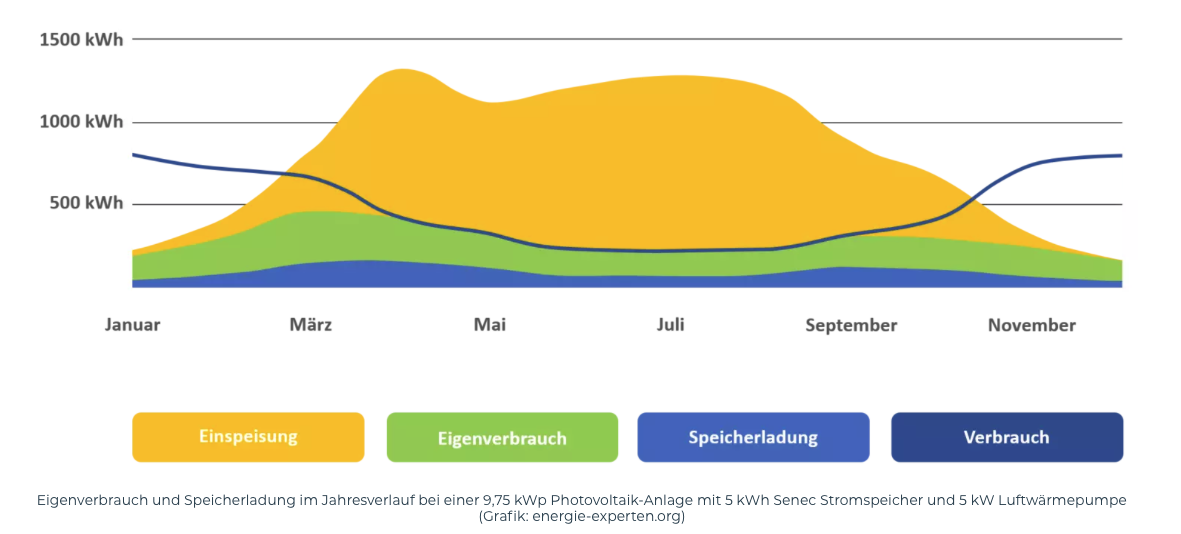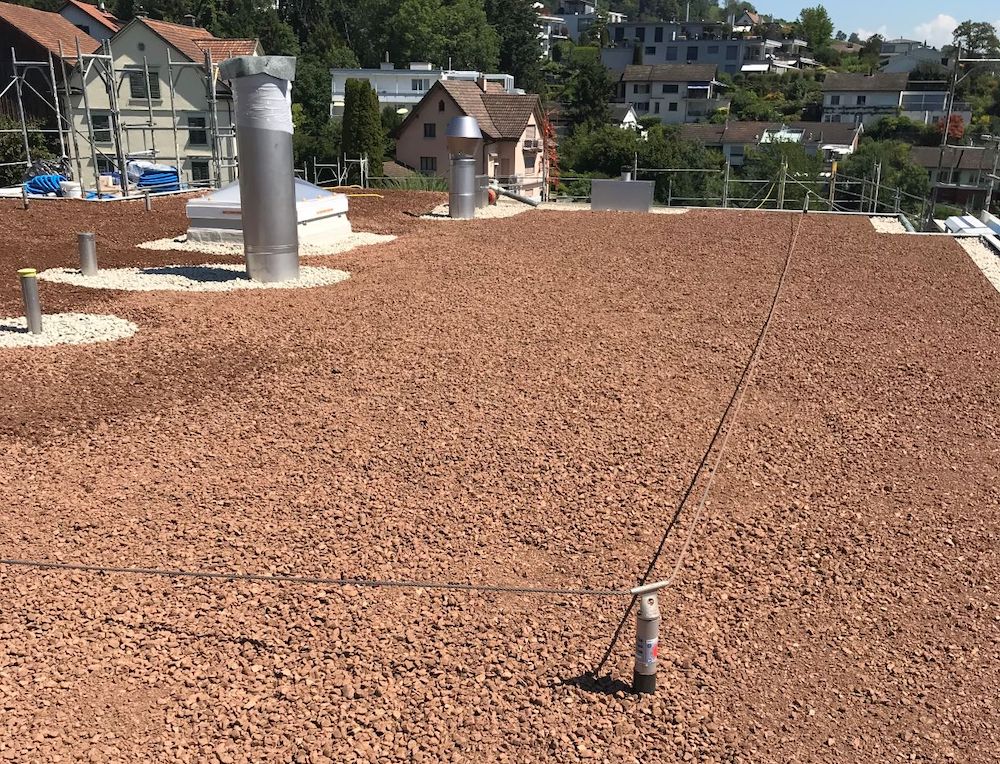Solar in a multi-family house with condominium ownership

About two years ago we moved into an apartment in a new building. Unfortunately, the house was built even in 2020 without a solar system on the roof, so the question soon arose whether, when and how to supplement the property with such a system.
In this post, I recount our experience as a condominium association with the project, and list some pointers that should be useful for similar endeavors.
Interests of the owners
A solar project for an apartment building is often more complex than for a single-family home. If it is a property with rental apartments, the owner must decide whether and how to sell the electricity to the tenants. This, like all other decisions, rests solely with the owner, which allows little resident input, but is efficient.
With condominium ownership (i.e., the individual apartments in an apartment building are owned by the residents), the situation is a bit more complicated. Of course, it is an important basic requirement that all co-owners participate in the project. But even if there is interest in principle, the objectives may be weighted differently:
- Maximize return vs. contribute to solving the climate problem.
- Energy security and emergency power vs. cost
- Self-sufficiency and self-consumption vs. feed-in / return on investment
- Interest in technology and possibly even self-building vs. “all-round carefree package
- Cost efficiency with own contribution vs. price for an “all-round carefree package”.
Some of these factors I personally had not considered in the beginning. Fortunately, in our case, we have a very motivated and committed ownership, and we found a great solution with input from all parties. However, the process took time. My advice is definitely to consider these “soft” factors from the beginning as well.
Self-consumption, grid feeding, and billing
An important next factor in a multi-family solar project is the use and billing of the electricity produced. Basically, the electricity can be consumed directly in the house or fed into the grid (either all the electricity or only the surplus after self-consumption).
It makes sense to optimize the self-consumption of the electricity in the house, as this puts the least strain on the electricity grids and often (but not always, see below) also makes financial sense.
In apartment buildings with condominiums, however, an internal billing key must be defined for this purpose: assuming one party is often at home during the day and even has an electric car, and a second party is usually only at home in the evening and generally consumes less electricity, then the former would benefit much more from the direct consumption of the electricity produced during the day (thanks to a reduced electricity bill) than the latter. To address this, one defines an “internal” consumption tariff for the electricity, the proceeds of which are then remunerated to the condominium owners’ association (i.e. the investors in the project) as a return.
This billing requires regulation and technical implementation and is called “ZEV” in Switzerland - Zusammenschluss zum Eigenverbrauch. On the technical side, this requires both hardware (namely smart meters) and software (for recording and billing electricity consumption). There are various providers of hardware and software, and the installation naturally brings additional costs. Towards the “outside”, i.e. towards the electricity company, the entire property usually has only one meter and one electricity bill, and the consumption per apartment (grid electricity consumption and solar electricity consumption) is billed internally. In addition to the hardware and software mentioned, billing and collection must then also be done - some software providers also offer this (for a fee) as a service.
Fortunately, more and more electricity providers are now offering a solution as an alternative: after the installation of smart meters by the utility, the utility bills everything - directly on the usual electricity bill to the individual parties. Of course, additional charges are also incurred here.
As a final option, it is also possible to feed all the electricity produced from the system into the grid without using the solar power in the house. In this way, the entire electricity fed into the grid is simply remunerated and the yield achieved goes to the owners. As mentioned at the beginning, this may not make sense from a “technical” point of view and from a “climate” point of view, but it can be the easiest to implement and most financially profitable solution.
Much depends here on the remuneration model for electricity fed into the grid, and this will be discussed in the next section.
Remuneration for electricity fed into the grid
Depending on the country, there are different models of remuneration for solar electricity fed into the grid:
- “Net-metering”, i.e. fed-in electricity becomes usable in “kWh” credits at other times (e.g. at night). There are different time frames (monthly, yearly). This model is used e.g. in the Netherlands.
- Fixed payment per kWh (e.g. in Switzerland). “Direktvermarktung” as an option e.g. in Germany.
- Remuneration at hourly current market price (e.g. Epex Spot) depending with additional “add-on” remuneration (e.g. Estonia).
- etc.
In Switzerland, it is common to receive a fixed remuneration per kWh fed into the grid directly from the local electricity supplier (EW). Unfortunately, the market is very fragmented and there are about as many tariffs as regional electricity suppliers (and this is about 600!). Since in Switzerland the electricity market for households is not liberalized, this is usually also the usual option, although in principle it is also possible in Switzerland to sell to third party suppliers (“Direktvermarktung”). (CKW in particular made this model better known thanks to high tariffs in 2022).
For regional EWs, the tariff varies quite a bit, and it is reset annually for one year. An overview of tariffs is available from VESE. An important point is that some EWs define different tariffs for the return of surplus electricity after self-consumption, or return of all generated electricity. For example, in my residential community of Stäfa, it is 18 centimes (without self-consumption) vs. 12 centimes (with self-consumption). This is a significant difference, and depending on plant size and self-consumption structure, it is commercially more attractive to feed everything in than to aim for self-consumption. (Which I personally do not consider a meaningful incentive). By the way, here in communities already within a radius of about 20 km the tariff varies between 11 and 26 centimes!

Definition of the solar project
After all the considerations, it is finally time to define the actual project. Basically, the system consists of the panels and substructure, the inverter, and metering and billing solutions. In addition, there is the option of a house battery, integration of electric car charging stations, and integration and “smart” control of consumers such as heat pump, boiler, the charging stations mentioned. Below are some brief comments on the individual elements:
Size and power of the project
The achievable power and energy production depends on the available area. The power is expressed in kWp (kiloWatt-peak), the maximum power that can be achieved under the best solar radiation and temperature. (A panel typically has an output of about 400 watts and as a rule of thumb, a kWp produces about 1000 kWh of electricity per year for a central European location).
On the consumption side, an important factor is the achievable own consumption, i.e. how much of the produced electricity can be used directly in the house. This is relevant to calculate the return on investment and to decide which feed-in option to choose. A big problem in Switzerland is the determination of the historical consumption over the total annual energy consumption: since there are hardly any smart meters installed in Switzerland, the only reference point is the electricity bill, which however is often only sent quarterly or semi-annually. This means that the breakdown of consumption over the day, weekday and weekend, or over the months / seasons is often completely unclear. Mostly, one can only roughly estimate the winter and summer consumption, and by means of high and low tariff consumption on the bill estimate day vs. night share. (Whereas weekends are often also in low tariff all day and thus distort the picture). If there is a digital electricity meter, you can often retrieve at least the last 12 months on the device. And if you want to know exactly without a smart meter, you can also install an energy meter like the Shelly 3EM and use an app like Zerofy for visualization.
In a multi-family house, you can collect the bills of all parties (or all monthly values) and add this up, as well as the general electricity, any existing common heat pump meter, e-car charging stations, to create an estimate.

Using possible installation sizes, sizing and consumption, one can now calculate self-consumption and project costs and return on investment.
It is important to note that due to the good use of space in multi-family housing, the installable power per party/occupant is often smaller than in single-family housing.
Panels
These are a “commodity” these days: should last a good 20+ years, similar performance, often made in China. There are various performance tests if anyone wants to compare. By the way, installers often make a good part of their profit on the margin on the panels. (Purchase prices go with the market and vary over the last years between 0.17 - 0.27 USD,EUR per Watt).
Inverter
Various suppliers Huawei, Sungrow, SMA, Fronius, SolarEdge, Enphase, Growatt, etc. Modern inverters have an internet/cloud connection that can be used via manufacturer app and API for monitoring and control (In our app Zerofy we integrate e.g. so far with Huawei and Sungrow).
Battery
Batteries are basically feasible even in multi-family housing, but often a bit more complex because of consumption billing than in single-family housing. Also, sizing is more difficult without accurate production and self-consumption data. One option is to consider a battery a few years after the solar system is installed. This makes the initial project simpler (it’s complex enough as it is :)) and the cost of batteries also comes down fairly quickly. Important: A solar system can only provide emergency power to the house in case of a power outage in the grid, in combination with a battery, because the inverter itself needs power. So if you want emergency power, you need a battery.
Metering, ZEV etc.
The smart meters are often provided by the EW, or in the case of ZEV, either already installed devices work, or they have to be additionally procured and installed. Here is an interesting product from Switzerland to mention: smart-me with an innovative cloud connection (also integrated with Zerofy.).
Charging stations, heat pump, consumption control, etc.
For charging stations in multi-family housing, one should choose a solution with load management, and ideally cloud-connected as well. For example Zaptec or Pico - I myself am very satisfied with Zaptec. Heat pumps can also be controlled via cloud (e.g. Nibe) or SG-Ready-Interface, as well as a heating rod for the boiler. (I.e. In case of solar surplus, the heating rod can preheat the boiler, and the boiler is then a “heat battery”, so to speak). To control all these devices, a hardware based system like solarmanager can be used, or a cloud based solution like our own Zerofy product (currently rather designed for single family homes, in the future possibly also for MFH).
Structural
Some points about mounting on the roof and permitting:
- On flat roofs, panels are mounted on sub-frames. These are usually not screwed to the roof, but simply fixed with ballast (garden plates).
- The angle today is usually flat and about 20-30cm high. Often not oriented to the south but east-west, since yield in the morning and evening is more in line with the consumption pattern than the highest possible midday yield.
- The mentioned low panel installations can often be realized in Switzerland without a proper building application, for this ask your local municipality (notification procedure vs proper procedure - we already had green light after one week!).
- Any safety lines installed must be taken into account by the suppliers. SUVA recommends certain minimum distances.
- “Green roof”: a roof covered with substrate that specifically encourages the growth of plants for greening and cooling can be a problem as the plants grow around the panels. Substrate must be a) either vacuumed out and replaced with gravel or b) a special liner must be laid under the panels. Must be included in quotes.
- Power optimizers: help “balance” power in partial shading to maximize system performance. Clarify exactly whether these are really needed, if included in the offer (additional costs).

Image: roof with safety lines, superstructure and substrate for a green roof.
Suppliers, quotes, prices, and subsidies.
Equipped with all this knowledge, you can now ask for quotes (or offers, as we call them in Switzerland). Often, of course, the providers will explain all the above points from their point of view as well, but our summary is hopefully helpful to better understand the various offers themselves.
About the providers. Basically you have the choice between
- Large companies (e.g. Swiss market leaders, or international providers)
- Local small companies (KMU)
- Self-build with the help of an energy transition Self-build cooperative (EWG)
- Self-build without support
Large suppliers and SMEs usually offer “all-inclusive” packages. The offers of the market leaders usually come along somewhat more “elegantly” and large companies offer at most additional security regarding warranty etc.. The SMEs offer the regional reference, one supports local trade and often has a long-term direct and personal contact. Self-building reduces the costs, but is associated with additional risk and requires the knowledge and the necessary time. Self-building cooperatives (also Energiewende-Genossenschaften EWG) offer an intermediate solution between SMEs and self-building: the whole project planning, management, acceptance, material ordering, etc. is taken over by the EWG, but the residents help with the installation of the panels and thus reduce the costs (and have a collaborative project).
Costs without subsidies
Since the offers differ in the offered system size (kWp) and other factors, it pays to look very carefully when comparing. A simple direct comparison is the cost per kWp installed capacity. This varied in our offers between 2600 and 1600 CHF per kWp, the offers were on average around 2000 CHF/kWp. This is for a system including all installation work, electrician, control of consumers - but without battery. And it is the price before subsidies.
Subsidies
In Switzerland, there is a one-time government subsidy per plant, depending on the size of the plant. The government subsidy is checked, approved, and paid by the organization Pronovo and can be calculated on their website. Important: depending on the canton and municipality, there are additional subsidies, often not easy to find. Our municipality also promotes in addition to Pronovo. With all the subsidies, the project costs in our case are reduced by about 30%.
Our decision
Which system and implementation did we finally decide on? I’ll report on that soon in a next blog post!
If you want to stay informed about the next post and about Zerofy in general, sign up for our newsletter here: